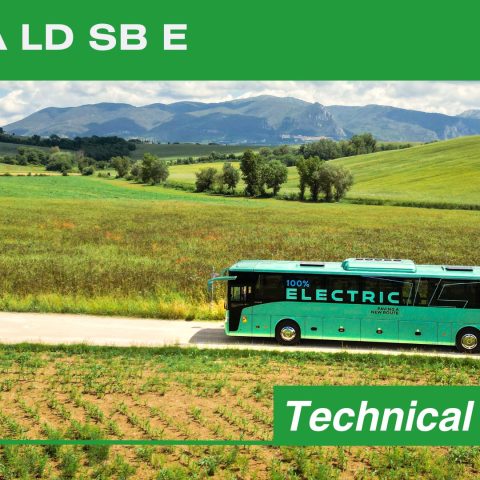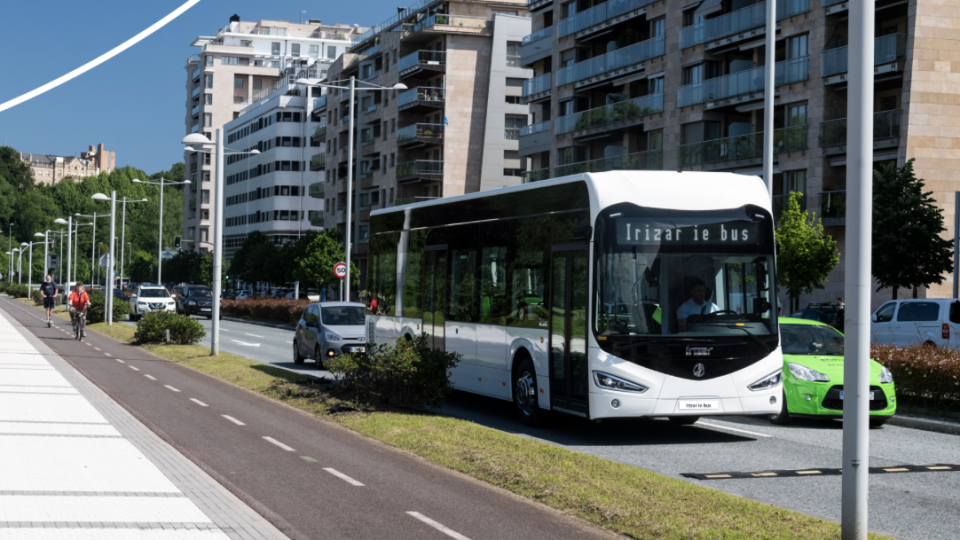Temsa LD SB E: all the features of the Turkish intercity high-floor electric bus
It is the present of urban transport. For intercity transport, it is one of the possible futures. We are talking about BEV technology. Even if the viability of battery electric buses in the city bus segment (costs aside) is now established, as far as intercity mission profiles are concerned, there are still question marks. Although, […]

It is the present of urban transport. For intercity transport, it is one of the possible futures. We are talking about BEV technology. Even if the viability of battery electric buses in the city bus segment (costs aside) is now established, as far as intercity mission profiles are concerned, there are still question marks.
Although, the regulatory framework is starting to become clear and the funding is also starting to come in: the European roadmap for reducing emissions from heavy-duty vehicles prescribes a 45 per cent reduction in CO2 by 2030, 65 per cent by 2035, 90 per cent by 2040, relative to new registrations.
This article was previously published on the May 2024 issue of Sustainable Bus magazine
Temsa LD SB E within the intercity e-bus market
Market supply, meanwhile, is latent. The first electrically powered Class II buses to come onto the market are the Low Entry models (see Iveco Crossway and MAN Lion’s City). For pure high-floor intercity vehicles, the matter becomes much more complicated. At Iveco Bus, they are working on it. Solaris will launch a dedicated platform no earlier than 2026. The first to enter the market were the Chinese OEMs: Yutong has some units already in operation. BYD has put electric demo vehicles into operation in Europe, even on Flixbus lines (with disappointing results, but we are talking about five years ago…).
And then, there is Temsa. The Turkish group is coming off a semi-triumphant 2023, with registered volumes in Europe up 86 per cent: from 353 units in 2022 to 658 last year. Moreover, this value is well above the pre-Covid average.
Temsa LD SB E intercity bus model was presented for the first time at the IAA expo in Hannover in 2022 and re-proposed at Busworld in Brussels in 2023. It joins a zero-emission line-up that already includes the urban battery-powered Avenue Electron and the electric version of the MD9. These are all part of a corporate re-launch operation that has been put in place from the end of 2020 thanks to becoming part of the joint venture formed by the Turkish industrial-financial conglomerate Sabanci Holding (second only to rival Koc Group, which also owns Otokar) and the Czech investment fund PPF Group.
Today, Temsa has 1,800 employees (200 of them in the R&D division), 66 countries covered and a production capacity of 4,000 vehicles, 2,000 buses and as many mini buses.

Temsa LD SB E: 13-meter for 63 passengers
In short, with this high-floor BEV intercity bus, Temsa seeks to exploit an early start in a segment that is still very young (just 200 electric intercity buses were registered in 2023 in Europe) but will surely grow.
The Adana-based company’s Class II is presented here in its 13-metre, 63-seat version (there is also a 12.3-metre, 57-seat version on offer). What changes is the wheelbase, the overhangs are identical. The height is within 3,350 millimetres overall.
The motor is a three-phase Dana TM4 with permanent magnets capable of 250 kW. It is positioned centrally behind the rear axle and connected directly to the drive shaft.

The batteries are assembled by Temsa and equipped with proprietary BMS. The modules are widely distributed in the luggage compartment (two on the right side, four on the left) and at the rear (four). All are easily accessible. The formula chosen by Temsa is nickel, manganese and cobalt (NMC), with three capacity variants available: 210, 280 and 350 kWh.
The bus we tested has maximum capacity. As already mentioned, there are ten modules of 35 kWh each. Energy density is 133 Wh/kg and could be improved (the latest generation battery modules used by some competitors reach 160-170 kWh). This is due to the fact that, curiously enough, the modules work at a nominal voltage of 325 V. Charging is done via a CCS2 socket.

A note also on the axles: at the front, there is an independent axle with a load capacity of 7,500 kg, while at the rear, there is a rigid axle with a load capacity of 12,290 kg.
There are two doors for boarding, single at the front and double in the centre. A manual or automatic platform is available for wheelchair access. The pair of seats behind the central access is tilting.
The interior design, which is enhanced by a good level of brightness, is good. Among the options: reclining seats, folding tray, magazine pocket. Travel comfort is ensured by a 37 kW Valeo air conditioning system. A 3 cubic metre luggage compartment is added to the overhead luggage rack.

Temsa LD SB E: the driver place
The cockpit can be partially or completely isolated from the passenger compartment. The driver’s seat – which can optionally be heated – has pneumatic adjustment. The dashboard is enveloping. It is dominated by a display and optional monitor. Images from the rear view camera are fed into an ad hoc space in the centre of the lighting panel. A rear parking sensor, heated windscreen and electrically adjustable exterior mirrors are also available as options for the driver. There is no mirrorcam option at the moment.
In terms of safety, the Temsa-branded Class II features all the technologies that have become mandatory under the GSR2 regulation which entered into force in July for new registrations.
In short, the Temsa LD SB E opens a new segment for the Turkish brand, and it is only an intermediate step in a projection towards zero emission which, according to company statements, will eventually result in an offer of 10 vehicles (eight electric and two fuel-cell buses). Temsa expects alternative drive vehicles to account for 50 per cent of its city bus sales by 2025. And 2025 is here.







